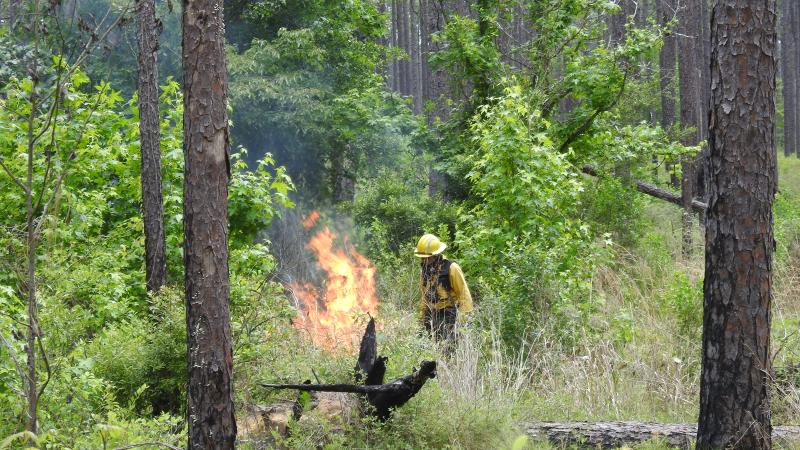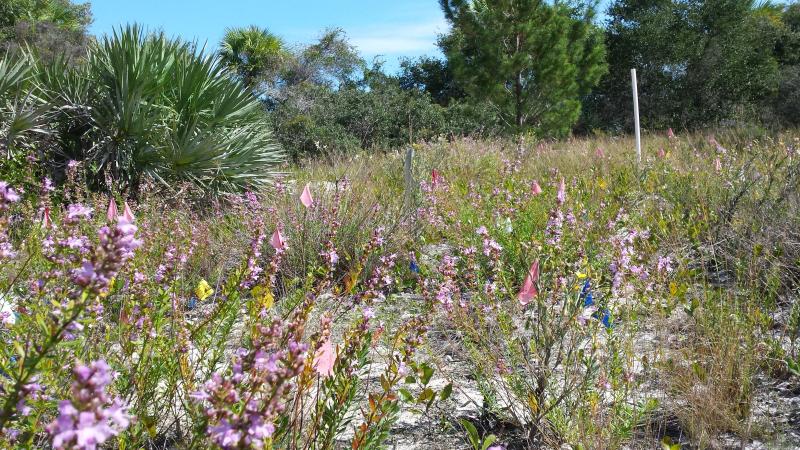Restoring Wetlands So Pitcher Plants Can Flourish
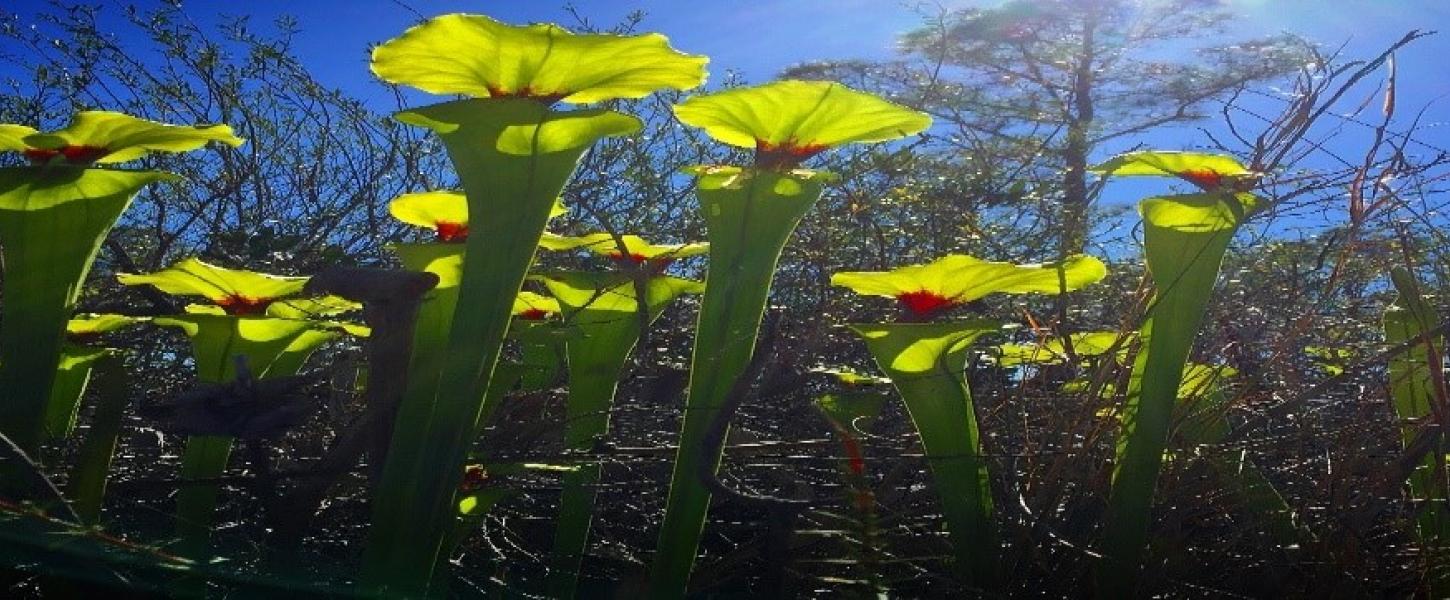
By Stacy Goulden, biological scientist, Deer Lake State Park
I remember the first time I saw them - bright green and tube-like plants growing in a bog in the woods. I’d never seen anything quite like them.
Come to find out, they are called pitcher plants. The more I learned about them, the more interested I became. And who wouldn’t?
After all, these remarkable plants are a twist of nature. They actually lure, trap and eat animals, mostly insects to be precise.
Many decades ago, before natural processes such as hydrology and lightning fires were interrupted, the wet prairies and seepage slopes inhabited by pitcher plants were common. These boggy habitats with low soil nutrients, but ample water and sunlight, provided a niche for plants that can gather sustenance from somewhere besides the soil.
Today, however, only a fraction of these wetlands remain across the Southeast United States. Those that remain are too often overgrown with woody shrubs that shade out the rich assemblage of herbaceous plants.
Restoring the Wetlands
But there’s hope! With a lot of work and the right equipment, these resilient wetlands can once again be places of incredible diversity, where natural wonders like pitcher plants can flourish. This is the story of how our crew, along with our partners at the Atlanta Botanical Garden, are bringing the wet prairies of Deer Lake State Park back to life. It is a story of determination, perseverance and, ultimately, saving a natural treasure.
The process started with a grant from the U.S. Fish and Wildlife Service in 2013. Back then it was just three of us along with whatever volunteers we could convince to join us. Our job was to carve out a handful of small wet prairies covered by 50-plus years of woody overgrowth.
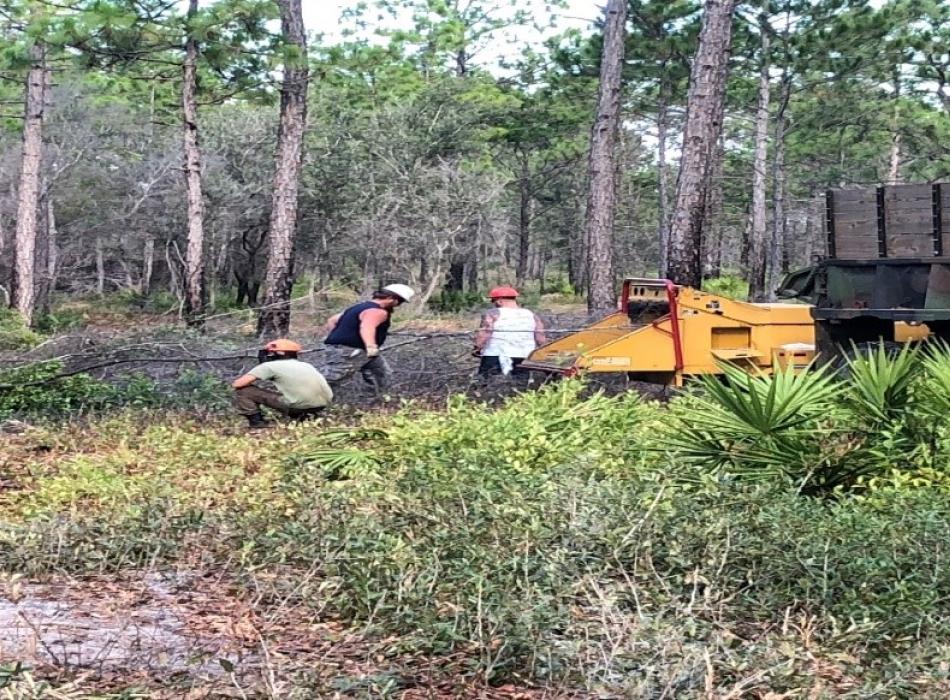
Cutting and chipping titi trees by hand.
The chief culprits shading out these wetlands were evergreen trees and shrubs such as black titi, gallberry, fetterbush, wax myrtle and sweet bay. The three of us worked with chainsaws, brush cutters and other hand tools to clear the prairies and chip the woody material.
It was a huge amount of manual labor under often grueling conditions, especially when some of the small wet prairies turned out to be not so small. We realized that if we really wanted to restore all the park’s carnivorous plant wetlands, we were going to have to think bigger, especially when it came to funding. That funding arrived in 2015.
Building Partnerships
In partnership with the Atlanta Botanical Garden, biological staff applied for and received a grant from the National Fish and Wildlife Foundation's Gulf Environmental Benefit Fund to design and implement what has become one of the largest wetland restoration projects ever attempted in Northwest Florida.
As a result, over 300 contiguous acres of former wet prairie and stream-side seepage slope restoration is currently underway at Deer Lake State Park.
To date nearly $8 million has been awarded to the Florida Park Service and the Atlanta Botanical Garden to restore the wetlands through removal of trees and woody shrubs, coppice mowing, prescribed burning and targeted species re-introductions. Using various equipment - including excavators, track loaders, compact feller bunchers, chippers and haulers - the crew cuts the titi out of the wetlands, chips the material and stages it for removal to a local paper mill.
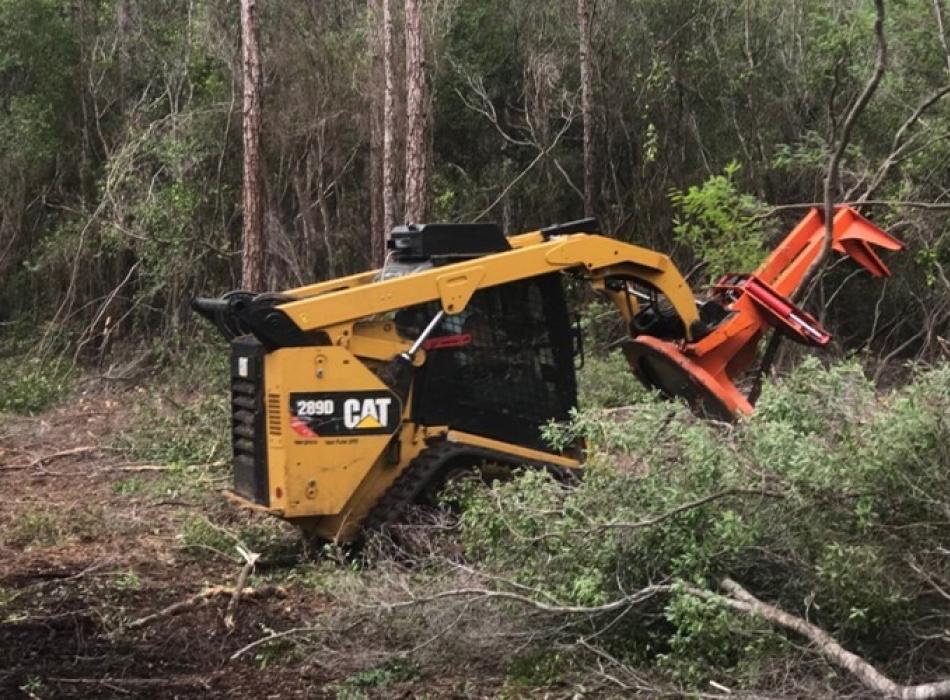
One of our crew using a compact track loader with feller buncher attachment to remove titi trees from overgrown wet prairie.
Objectives
One of our key objectives is to reduce the nutrient loading that occurred with the buildup of decades of titi leaf litter. Chipping and removing the woody biomass avoids adding even more nutrient to the wetland soils and ultimately into the coastal dune lakes.

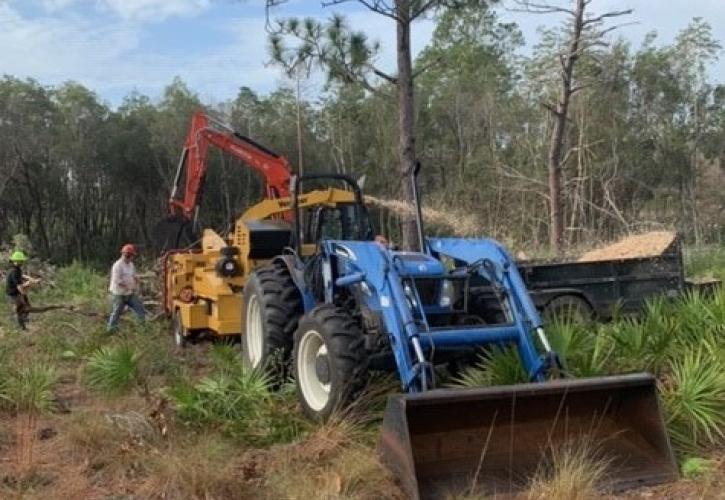

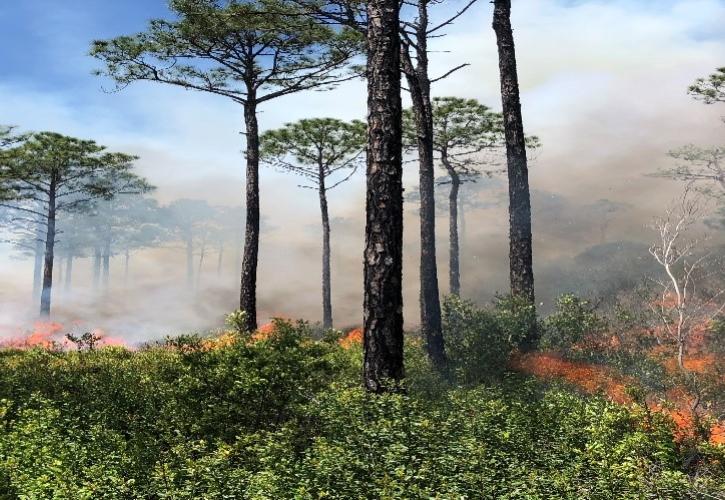

Successive burning: Any coppicing hardwoods are cut and allowed time to cure prior to the next prescribed burn. Each successive burn continues to reduce organic layers in the upper soil horizons, while increasing the relative abundance and distribution of native grasses.
No herbicide is applied to titi stumps in order to avoid any non-target impacts. One of the most common questions we get is about how we deal with resprouting or coppicing. The coppice is mowed annually with either machine-mounted or handheld brush cutters.
Once cut, laid down and cured, the coppice adds to the available fuel load, helping fires spread and impact new coppice growth until the grasses and herbaceous plants are fully restored.
While we still perform some of the more sensitive work by hand, most of the work is now accomplished with the equipment. Used responsibly, the equipment has allowed us to expand the project park-wide. But it does add another level of maintenance.
Our crew performs most of the required servicing and maintenance on all our machines. It takes a lot of wrench bending and knuckle busting to keep everything running smoothly, but the results are well worth it. The example of wet prairie restoration, below, started back in 2013 and has involved all phases described above, including the one-time harvest of plantation pines.
Recovery of the Pitcher plants
In most of the project areas, the pitcher plants, orchids and other signature species rebound from seed and rhizomes, but other areas need more help.
This is where our partners with the Atlanta Botanical Garden come in. With seed collected from the park, botanical garden staff have grown and reintroduced over 74,000 plants back into Deer Lake’s restored wet prairies where key species such as carnivorous plants and ground orchids had been lost or reduced to just a few individuals.
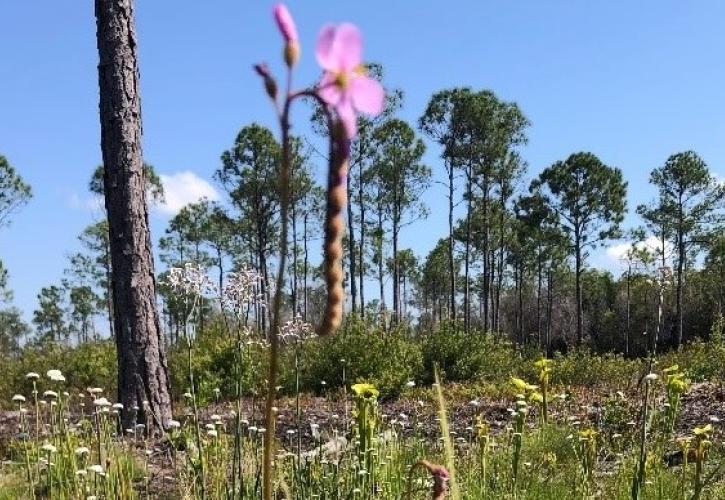
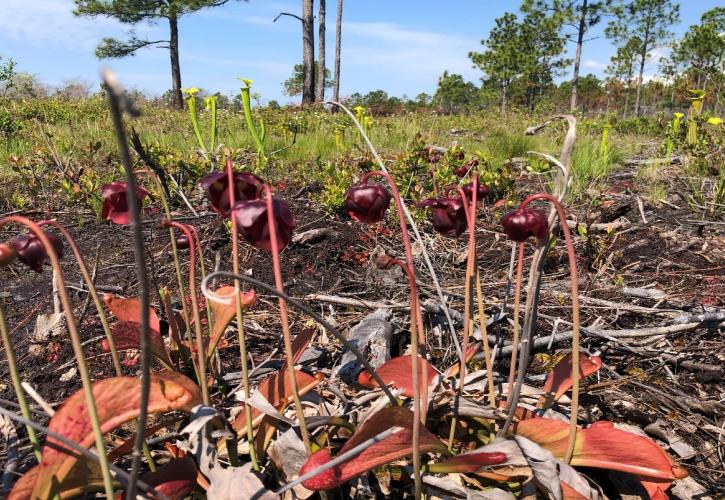
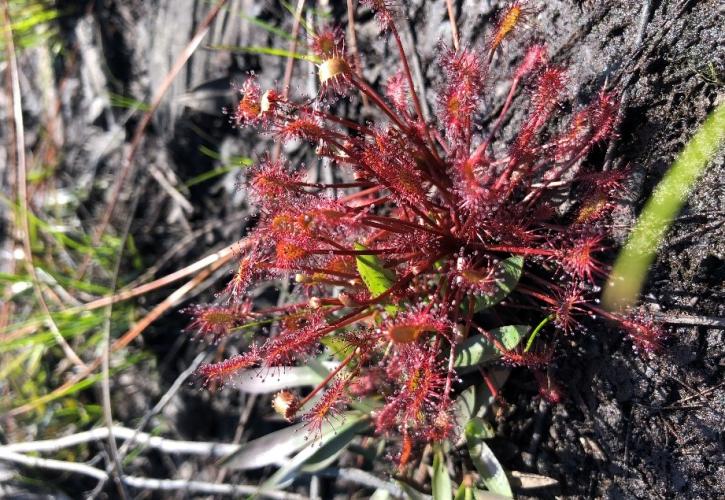
Protecting Coastal Dune Lakes
It’s important to point out that these wet prairies and seepage slopes make up the drainage ways that funnel the local watershed into the park’s rare coastal dune lakes. Correcting the dominance of woody species and re-establishing an herbaceous wetland not only restores diversity, it also restores the historic quality and quantity of water entering these globally significant lakes.
Preserving enough biologically productive green space to sustain our world is a challenge. This project is just one of many innovative and impactful restoration initiatives being accomplished to meet the challenge throughout Florida State Parks.
We’re proud to be a part of the legacy of restoring and preserving biologically productive lands – the places we can’t afford to lose.
Before and After Photos of Zone DL-17
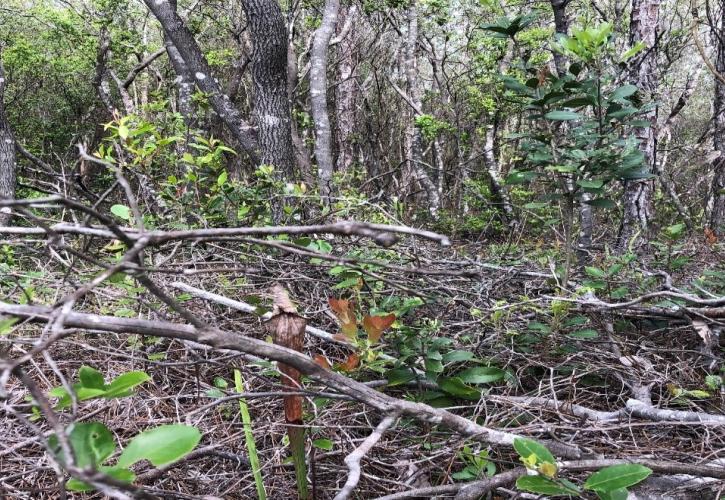
Former wet prairie in management zone DL-17. Prior to restoration the site was invaded by woody shrubs as a result of decades of fire exclusion. The trees altered the wet prairie by shading out herbaceous plants, pulling more water out of the ground, and gradually adding nutrient to the soil.
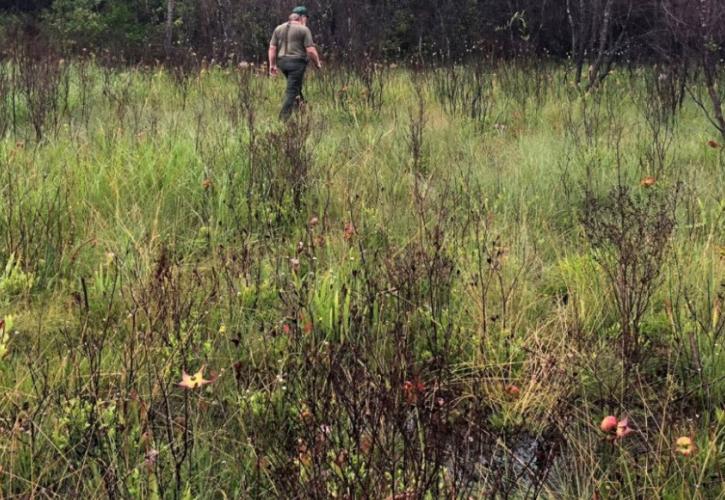
DL-17 wet prairie after initial titi removal, and several rounds of coppice mowing and prescribed burning. The site is now once again dominated by a diverse assemblage of herbaceous plants, including many carnivorous species such as pitcher plants, butterworts, and sundews.
Before photo: Former wet prairie in management zone DL-17. Prior to restoration the site was invaded by woody shrubs as a result of decades of fire exclusion. The trees altered the wet prairie by shading out herbaceous plants, pulling more water out of the ground and gradually adding nutrient to the soil.
After photo: DL-17 wet prairie after initial titi removal and several rounds of coppice mowing and prescribed burning. The site is once again dominated by a diverse assemblage of herbaceous plants, including many carnivorous species such as pitcher plants, butterworts and sundews.
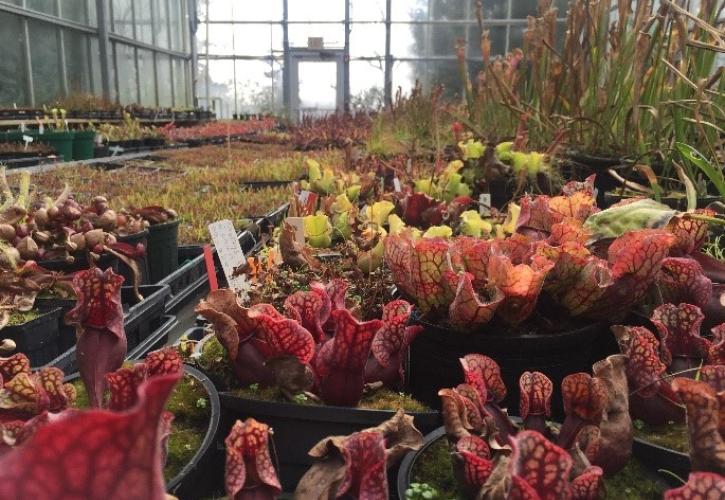
Pitcher plants grown in the nursery.
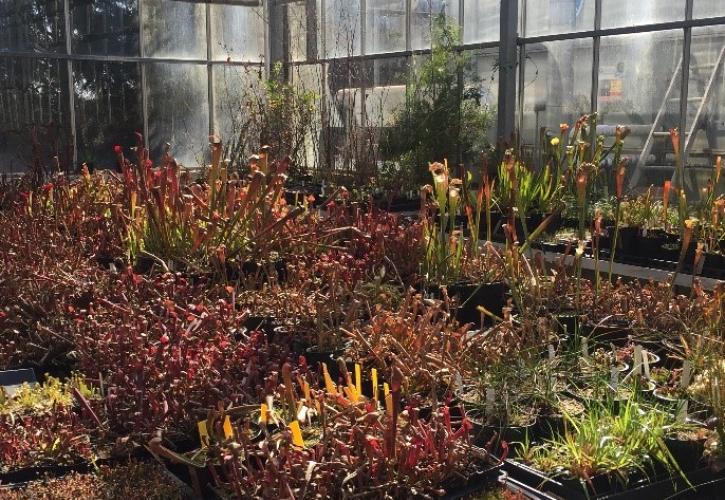
Pitcher plants grown in the nursery.

Atlanta Botanical Garden staff planting yellow pitcher plants in documented wet prairie sites at Deer Lake State Park.
Some of the pitcher plants grown from Deer Lake seed that are ready to return to the park.
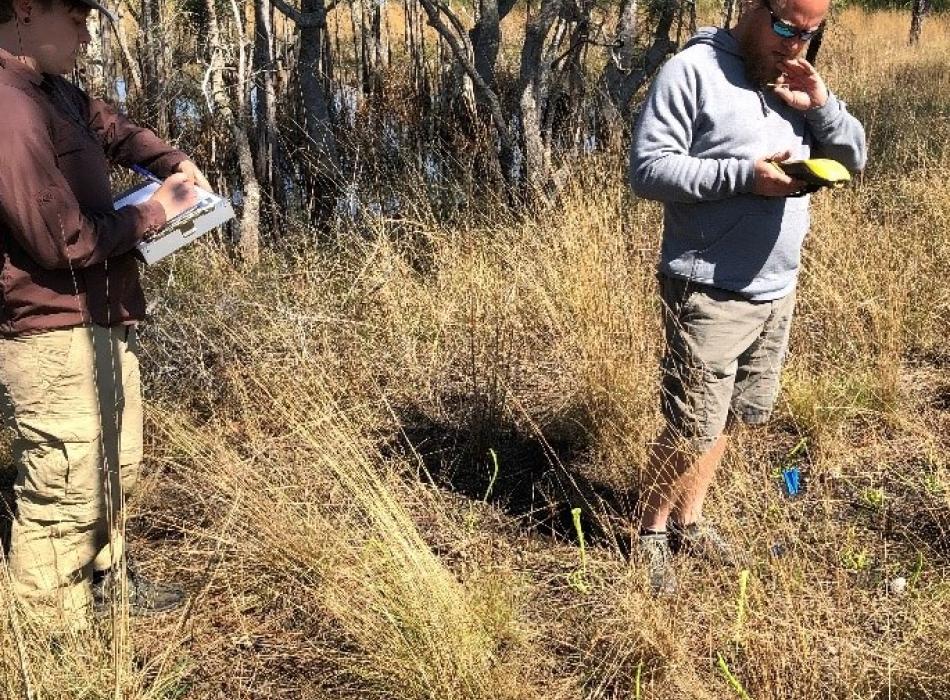
Atlanta Botanical Garden staff planting yellow pitcher plants in documented wet prairie sites at Deer Lake State Park.
About the Biologist Tells the Story Series
In this series we focus on our biologists as they share stories of their work in Florida’s state parks. The leadership and scientific research our biologists provide is essential for our legacy of conservation and land management. This series is an opportunity to connect these projects to the places where we ensure the health and sustainability of Florida State Parks.
